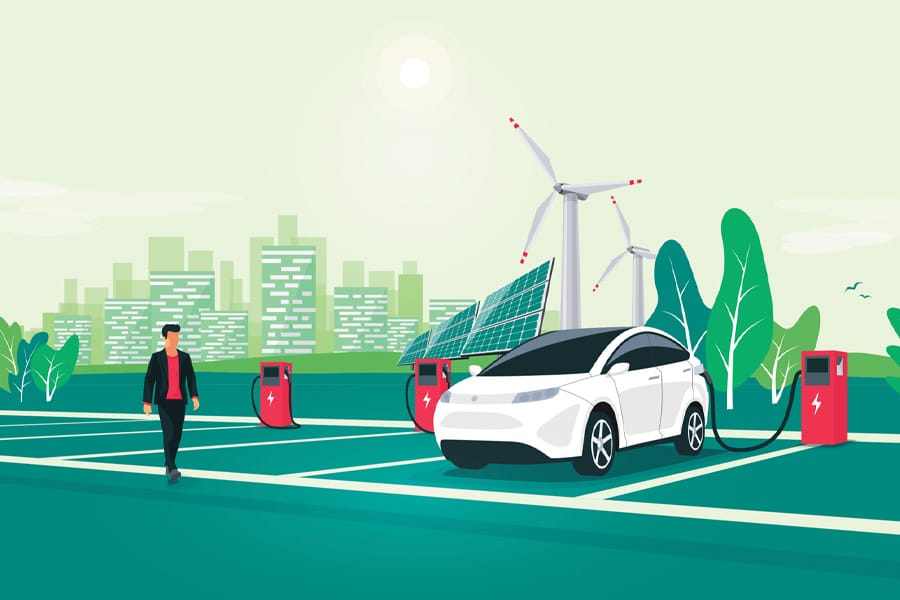According to the World Bank, more than half (56%) of the world’s population lives in cities, with some forecasting that by 2050 some 7 in 10 people across the globe will live in dense urban environments.
The pressures that large populations put on a city’s infrastructure, particularly transportation, along with the pollution that comes with considerable flows of private, public and commercial vehicle traffic, have challenged governments, local planners and environmentalists to come up with solutions for decades.
It is not surprising, therefore, that many have sought to re-evaluate how people and goods move and are transported around such large urban spaces, as well as how this mobility can become sustainable in the face of increasing threats to the well-being of both people and the planet from pollution.
What is urban mobility?
There are several definitions of urban mobility, but it is summed up as all of the movements of both people and goods that occur in a city via public or private transportation.
The World Bank argues that urban mobility is no longer an issue related just to moving people around by vehicles. “What people really need,” the bank says, “is the accessibility to various urban services. Numerous examples from different cities have demonstrated that better accessibility doesn’t have to be achieved by generating motorised traffic, particularly by private vehicles.”
Shifting how people are able to move around a city is becoming a pressing issue for planners working with limited space and a growing population.
Developing programmes that will help people, services and commercial interests navigate our cities is becoming a priority for hard-pressed local authorities and businesses alike.
What is a sustainable urban mobility plan?
Sustainable urban mobility plans—or “Sumps,” as they are known—are described by Interreg, an EU-backed initiative, as “essential planning tools for urban areas that are looking to move towards more sustainable and citizen-friendly mobility systems.”
The concept, which the European Commission claims it first elaborated in a 2013 study, “encourages the development of a long-term vision, involving the urban area and its surroundings.”
Access for all
Another EU-backed body, Simpla, describes a Sump as having as its central goal “improving accessibility of urban areas and providing high-quality and sustainable mobility and transport to, through and within the urban area.”
Simpla argues that a Sump seeks to guarantee accessibility to all road users, with a focus on the so-called “vulnerable users,” including pedestrians, cyclists, children and people with disabilities.
A Sump will “foster a balanced development of all transportation modes, tackling public and private, motorised and non-motorised transportation, inter-modallity, urban logistics, mobility management and intelligent transport systems.”
It will also seek to reduce air and noise pollution, improve road safety and security, and optimise the use of urban areas leading to a cleaner urban environment and, consequently, more attractive cities and better quality of life for all citizens.
The advent of technology-enabled transportation networks, such as alternative bus providers and bicycle sharing systems in large cities, is certainly helping to ease the pressure on roads, and deciding on having lower volumes traffic in urban areas helps to inform planners and communities about what can be achieved in terms of sustainable transport and mobility.
Sump benefits
Academic research is underway to examine the roles of and benefits potentially derived from the implementation of Sumps.
In the words of one study, urban transportation and mobility modelling “should play an important and integrated role with urban design for the public good.”
Another suggests, however, that issues can arise around a common approach toward such planning, suggesting that “no universally accepted set of criteria for tracking the progress of urban sustainable transportation projects currently exists; one reason for this is the absence of a standardised lexicon for sustainability measurement elements.”
Furthermore, a series of 16 low-carbon investments and measures in cities across the transportation, buildings, materials and waste sectors could slash global urban emissions by 90% by 2050, according to a World Bank analysis by Vivid Economics and the Stockholm Environmental Institute for the Coalition for Urban Transitions, as published in their recent report, “Climate Emergency, Urban Opportunity.”
“In particular, investments and measures in low-carbon passenger transport had returns that were miles ahead of other sectors, including buildings, material efficiency and waste. Three had particularly high returns: deploying more efficient and electric vehicles, implementing a mode shift to mass transit and reducing demand for motorised travel,” the bank added.
Challenges
There are, inevitably, challenges to creating Sumps, not least the scale of the investment involved.
According to the World Bank, the shift to more efficient and electric vehicle fleets in cities around the world would require a total incremental investment of US$8.6 trillion. A huge sum, to be sure, but the bank argues it would pay for itself in eight years, with annual returns reaching US$320 billion by 2030 and exceeding US$1trillion by 2050.
“These returns are largely direct savings from reduced fuel use and avoided fuel costs, without considering the economic benefits of lower emissions and cleaner air, which would yield even higher economic returns. This investment could also support 3.6 million jobs by 2030,” the bank said.
Others highlight the need for stakeholder participation and citizen involvement; institutional cooperation between sectors and disciplines; identifying and pursuing the most effective policy measures; and monitoring and evaluating the progress of a Sump.
The transition to sustainable urban mobility systems will be costly. What politicians, businesses and broader society have to decide is whether they can afford not to invest in such schemes.











